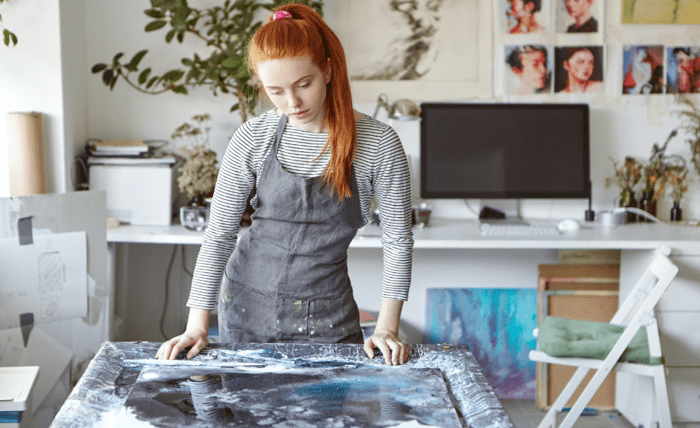
The Direct-to-Film (DTF) Printers are transforming the home printing sector. Now it is easy to print custom bags, T-shirts, and other items without the need for large, costly equipment.
The DTF process is performed by printing a design onto a special PET film, sprinkling it with the hot-melt adhesive powder, and heat-pressing it onto the fabric. The technique is used to create rich colours, prints that last longer, and prints of professional quality. Home users have been empowered by small printers and workflows. They are easy to use and produce results as good as those from professional systems.
To discover the limitless creative possibilities that the DTF technology provides, you can click here to get tips for home printing.
Why Select DTF Printing for Home Use
- DTF printing has several benefits to home users over other printing techniques:
- These printers have durable Prints. Prints do not fade after the repeat wash.
- They have compact equipment. They are less expensive and smaller than industrial machines, making them suitable for a home setup.
- Most fabrics don’t require pre-treatment for printing, unlike in DTG printing, where pre-treatment is usually mandatory.
- They are easy to use. It is simpler to install and maintain compared to screen printing or sublimation.
- You can use these printers for multi-purpose. They are used to print light and dark-coloured materials, leather, and mixed fabrics.
- Home users can start from small batches to enhance their experience.
Key Features to Look for in a Home DTF Printer
The selection of the correct printer is highly essential to have quality prints and prolonged usage. Take into consideration the following features:
Print Head Technology
- Excellent L-series printing heads or Epson XP are commonly used to print.
- White ink that circulates avoids clogs and makes printing smooth.
- Supports CMYK and White channels for vibrant, opaque designs.
Print Size
- A4 Printers: These are perfect when the design is small or prints on sleeves, or even when the design is on kids’ clothing.
- A3 Printers: A3 printers can be used on full-front T-shirts or bigger graphics.
Heat and Powder Handling
- Heat presses or miniature curing ovens are encouraged.
- Powder application can be done manually at home.
- Higher volume production will require automatic shaker systems.
DTF Printing Process at Home
When divided into simple steps, DTF printing is easy to perform.
Design Artwork:
Most designers use graphic design software to edit or create designs.
Print with PET Film:
To give the complete visible print, CMYK and White inks are used.
Apply Adhesive Powder:
Then sprinkling adhesive powder evenly over printed regions gives a smooth look.
Cure the Film:
Cure the film by melting the powder using a heat press or a heat oven.
Transfer to Fabric:
Transfer the design onto a piece of fabric using a heat press.
After Press to Durability:
Pressing assures maximum finish and adhesion.
DTF printing is well-suited for creating small batches or single-off custom prints very efficiently.
Tips on maintenance of Home DTF Printers
- Regular maintenance ensures the print quality.
- Conduct daily tests on nozzles to prevent clogging.
- Before shaking white ink bottles, shake them.
- Store the PET films in a dry place to avoid moisture damage.
- The print head must be dry to prevent clogging.
- A 20-25 °C room temperature is suitable.
Care is the key to longer printer life and sharp colours.
Selecting the Appropriate DTF Supplies
Good supplies make a visible difference in home DTF printing:
- PET Film: Select smooth, transparent PET films used in DTF.
- Adhesive Powder: Use to have even melting and good sticking.
- Inks: CMYK and white inks are highly pigmented and give rich and long-lasting prints.
There are starter kits, which contain all the required materials for home users. To get supplies of high-quality, durable printers or complete kits, go to dtflinko.com.
Tips on how to improve the quality of prints
With all these tips, you will achieve consistent professional performance from DTF printers at home.
- Wet clothes can be placed in the dryer and wrinkles ironed off.
- Level the heat press or curing oven to achieve even transfer.
- Test on scrap fabric to change settings.
- Store powders and inks in cool, dry conditions.
Most Effective applications of Home DTF printing
- DTF printing is ideal for personal projects and small businesses:
- Team apparel or sports uniforms.
- Home decoration products, such as pillow covers.
- Seasonal or limited-edition designs.
- Personalised T-shirts, hoodies, and tote bags.
- Small businesses’ branding.
Most home users start with small startups and gradually increase with the rise in demand.
Conclusion
DTF printers are professional-grade printers for home use. They are simple to handle, multifunctional, and provide durable results of high quality. But regular maintenance of DTF printers is essential to maintain print quality. Also, with a good choice of the printer, inks, films, and proper maintenance, you can produce prints either to use personally or to start off a small business.



